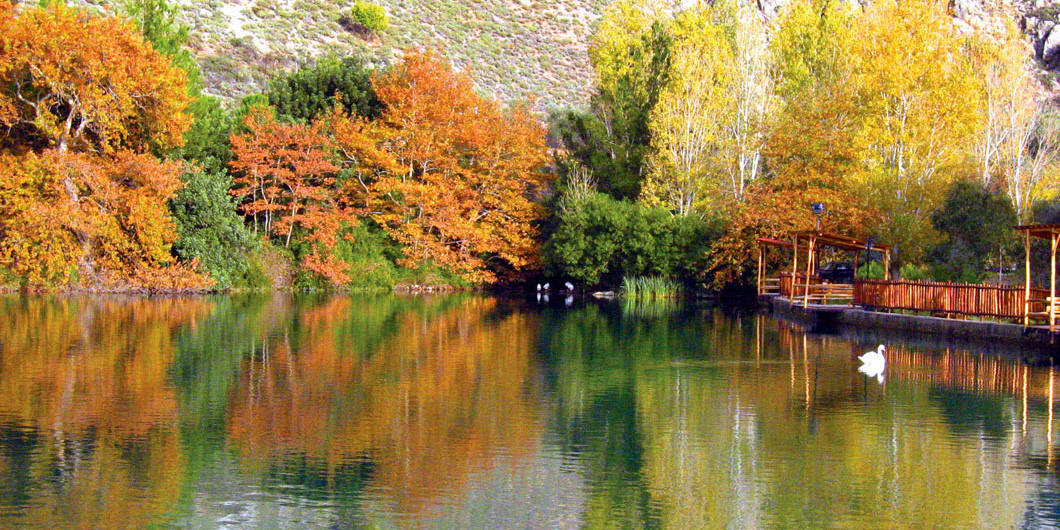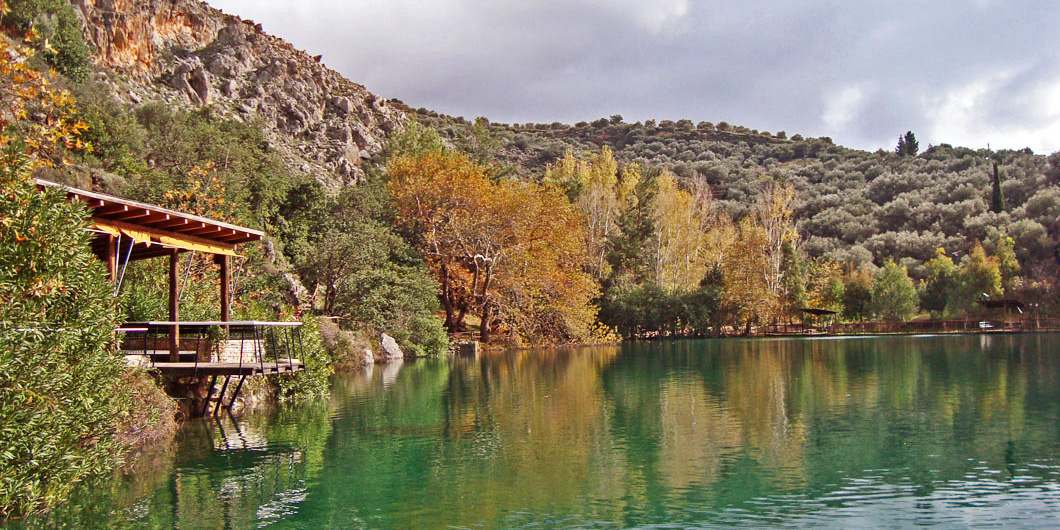Up to the end of the 1980s, north of the village of Zaros and right at the feet of the mountain there existed a small wetland centred on the spring of Votomos.
A natural depression at the spring had allowed the wetland to develop. In 1987, with the assistance of the Ministry of Forests a small artificial lake was created around the spring – which has become one of the most chief areas for woodland recreation in Crete.

West of the Votomos lake, and but a small distance off, is the smaller spring of Sterna, whose name comes from the Roman cistern, that is still visible today.
This engineering work is one of the greatest hydraulic feats achieved by the Romans in Crete – from here the water was led in a covered aqueduct all the way to Gortyn.
Today, after some landscaping work in the area, and in combination with the plant-life and the natural environment of the river Koutsoulidis, Stena is a place ideal for outdoor recreation.
Of great ecological interest is the ecosystem of the river Koutsoulidis – whose waters start in the springs of Votamos and Stena (whence the water supply for Gortyn, capital of Roman Crete).

The river then continues on in the gorge of Aghios Nikolaos, passing through Zaros village and the valley of the same name .. to end at the Phaneromenos dam. Its verdant banks, chiefly so because of the plane trees, and the presence among other fauna of a large population of eels and the river striped-neck terrapin (Mauremys caspica) makes the river a place of exceptional worth.
In recent years the local authorities at Zaros have made great efforts to clean up the river and the two springs – so keeping the ecological balance in trim.












